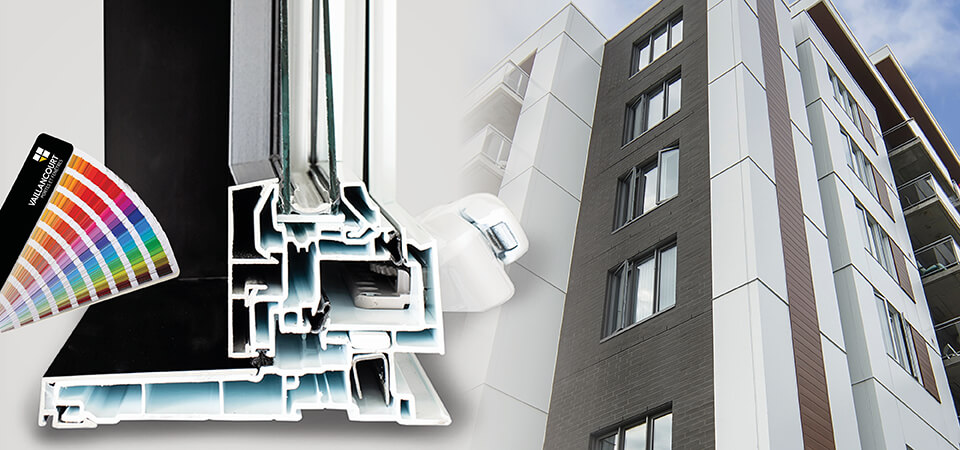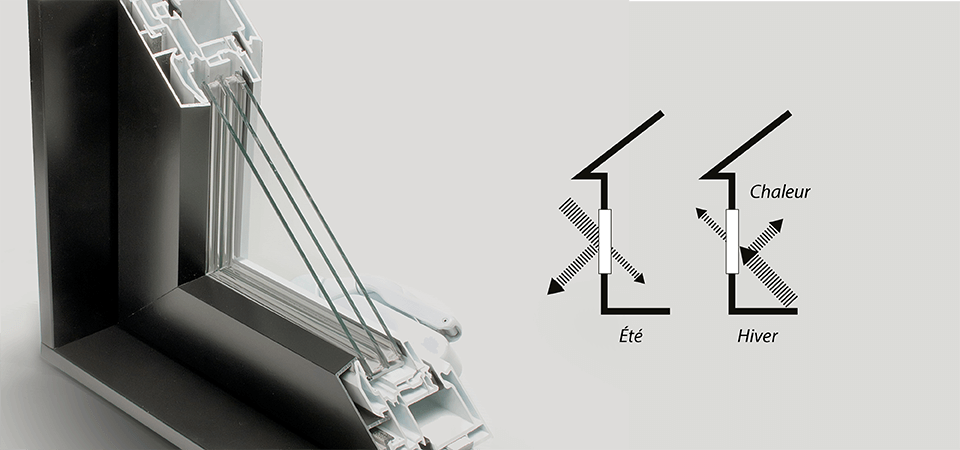We often hear the word "hybrid" in the automobile, bicycle and engineering industries. But when we use the term for windows, do you know what it means?
By definition, hybrid technology indicates the use of two or more elements that are not usually found together. For window products, the term is used to differentiate windows having the interior frame manufactured from a different material than the outside material.
Originally, windows are designed from various raw materials, for example PVC, aluminium or wood. Material combinations are also possible such as wood and aluminium, and PVC and aluminium. This is what we call "hybrid" or mixed materials. The most common is the interior frame in PVC and the outside made of aluminium-covered PVC. Let's focus on this one.
Why choose hybrid windows?
On the one hand, PVC is economical and renowned for its superior energy efficiency. On the other hand, aluminium stands out for its durability and high-resistance. The combined duo of PVC & aluminium is thus an interesting compromise as it combines the advantages of both materials.
Hybrid windows allow you to benefit from:
- larger dimension windows thanks to the structural performance of aluminium;
- energy savings thanks to the PVC;
- a modern look;
- an excellent price-quality ratio;
- unlimited colour options;
- customizable products (bars, grilles, hardware, etc.).
Most of the time, hybrid windows are installed for homes located in areas with strong climatic variations (strong wind, heavy rain, waterfront, etc.) or high-rise constructions. Sometimes, they are required for multi-story dwellings in metropolitan areas. That said, this type of window is great for all types of homes.
In conclusion, know that hybrid windows meet all performance standards are Energy Star certified. You may also visit a store to see these windows as well as the interior trim.





